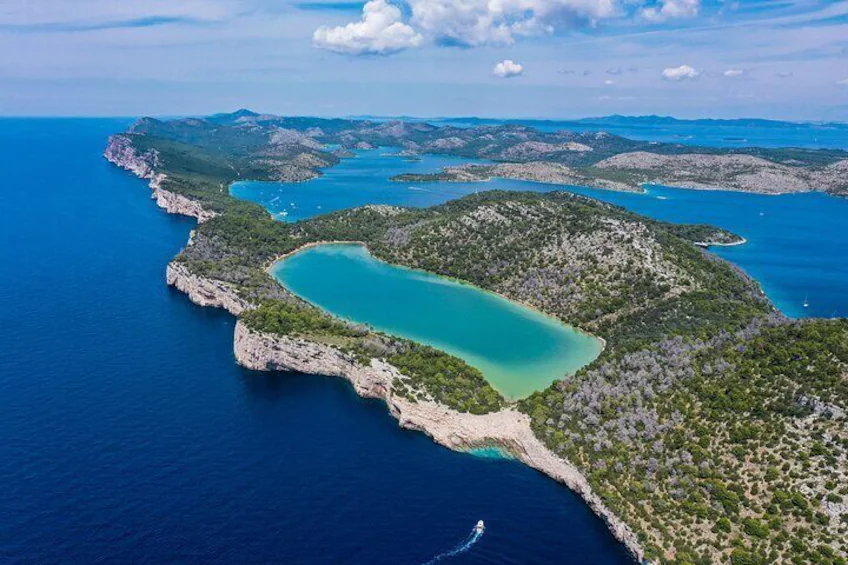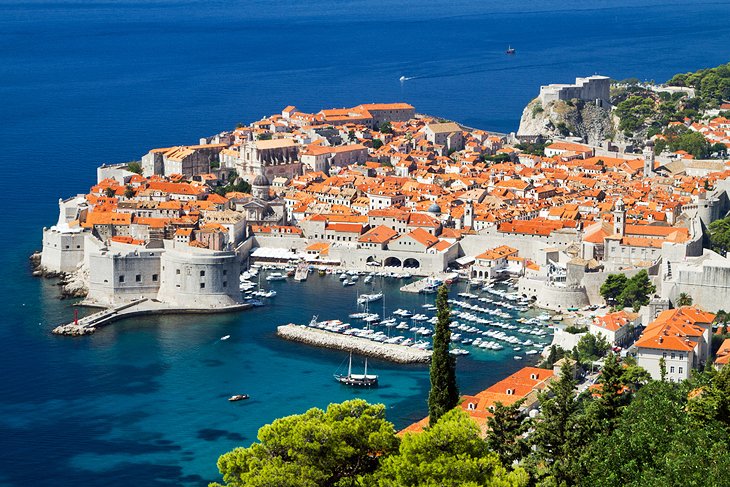Plitvice Lakes National Park

One of Croatia's biggest and oldest national parks is Plitvice Lakes National Park. Because of its exceptional and charming network of tufa lakes, caverns, and interconnected waterfalls, Plitvice Lakes National Park was added to the UNESCO World Heritage list in 1979.Established in 1949, the national park is located near the Bosnia and Herzegovina border in the mountainous karst region of central Croatia. The Croatian interior and the Adriatic coastline region are connected by the significant north-south route that runs through the national park area.
Over 296.85 square kilometers, or 73,350 acres, make up the protected region. Lika-Senj County owns about 90% of this region, with Karlovac County owning the remaining 10%.With over a million people annually, the national park is Croatia's most visited tourist destination.Depending on the season, admission fees range from 10 to 40 euros per adult per day in the summer (as of 2024).
The lakes of the national park are known across the world for their waterfall formations. From the surface, sixteen lakes are visible. Numerous tiny rivers and underground karst rivers come together to form these lakes. Each lake follows the flow of water and is connected to the others. Travertine, which is naturally deposited by moss, algae, and bacteria, acts as a dam between them. The interaction of water, air, and plants results in the especially delicate travertine barriers. In the middle of the Dinaric Alps, between the Lička Plješivica peak in the east and the Mala Kapela mountain in the west, the Plitvice Lakes have developed in a depression. The national park is situated near Slunj and Korenica on the D1 Zagreb–Split national highway, which runs across Bosnia and Herzegovina. Ogulin, Rakovica, Otočac, Gospić, and Bihać are some of the largest Bosnian municipalities in the vicinity.
The months of May, June, September, and October are the ideal times of year to explore Plitvice Lakes National Park. The weather is typically pleasant and temperate during these seasons, allowing visitors to take their time and thoroughly enjoy all of the national park's features.
The lakes of the national park are known across the world for their waterfall formations. From the surface, sixteen lakes are visible. Numerous tiny rivers and underground karst rivers come together to form these lakes. Each lake follows the flow of water and is connected to the others. Plitvice Lakes National Park (Nacionalni park Plitvicka jezera), Croatia's most popular inland destination, is made up of 16 emerald-blue lakes surrounded by high forested slopes and connected by a series of thundering waterfalls. The park, the nation's first national park, is crisscrossed by a system of pathways and wooden bridges, and admission includes boat trips across the lakes.From large cities like Zagreb or Zadar, you may take a bus to Plitvice Lakes National Park. From there, you can follow well-marked walking routes to experience the park's breathtaking lakes and waterfalls.
Getting There by Bus: Taking a bus is the most practical way to get to Plitvice Lakes. Regular services are offered from major cities like Split, Zadar, and Zagreb. The trip takes roughly two hours and twenty minutes from Zagreb. Tickets can be purchased at the bus stop or online. By Car: Plitvice Lakes is roughly 130 km from Zadar and 140 km from Zagreb if you would rather drive. Parking is available at the entrances, and the park is conveniently accessible via the main roads.
Walking Trails: There are seven designated walking trails (or programs) throughout the park, ranging in length and level of difficulty. The longest journey can take up to eight hours, while the shortest one takes roughly two hours. Programs B (Lower Lakes) and E (Upper Lakes) offer a more thorough experience.admittance Fees: Seasons and age have an impact on the admittance fee. During the busiest time of year, adults should budget about €40. Children and students can receive discounts.Hotel Plitvice, Hotel Degenija, Lyra Hotel Plitvice, Hotel Palcich Plitvice, Apartment I&M, and Camping Korana are located in the central Croatian region of Plitvice Lakes National Park.
By Admin
19 May 2025

.jpeg)
.jpeg)


